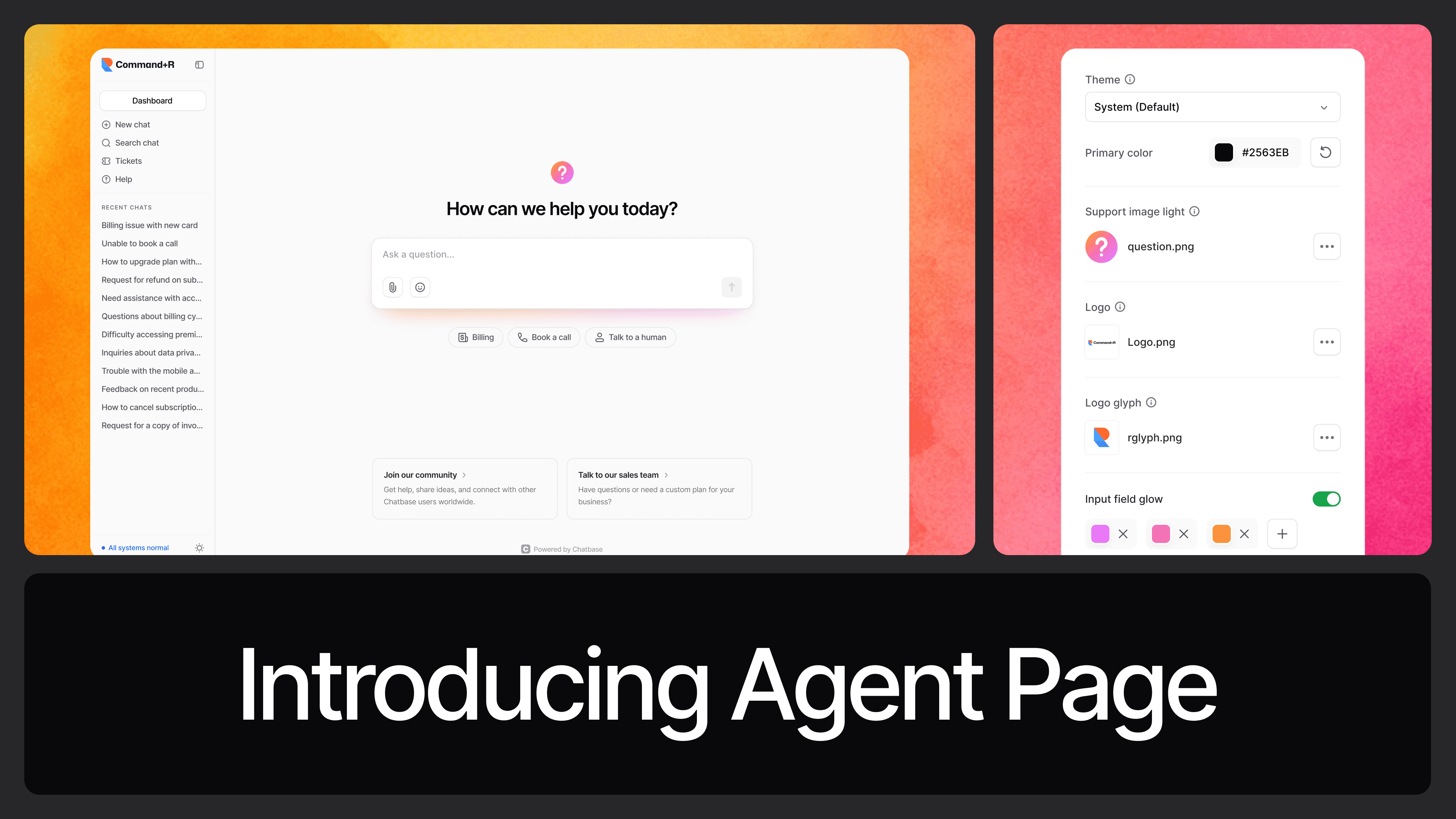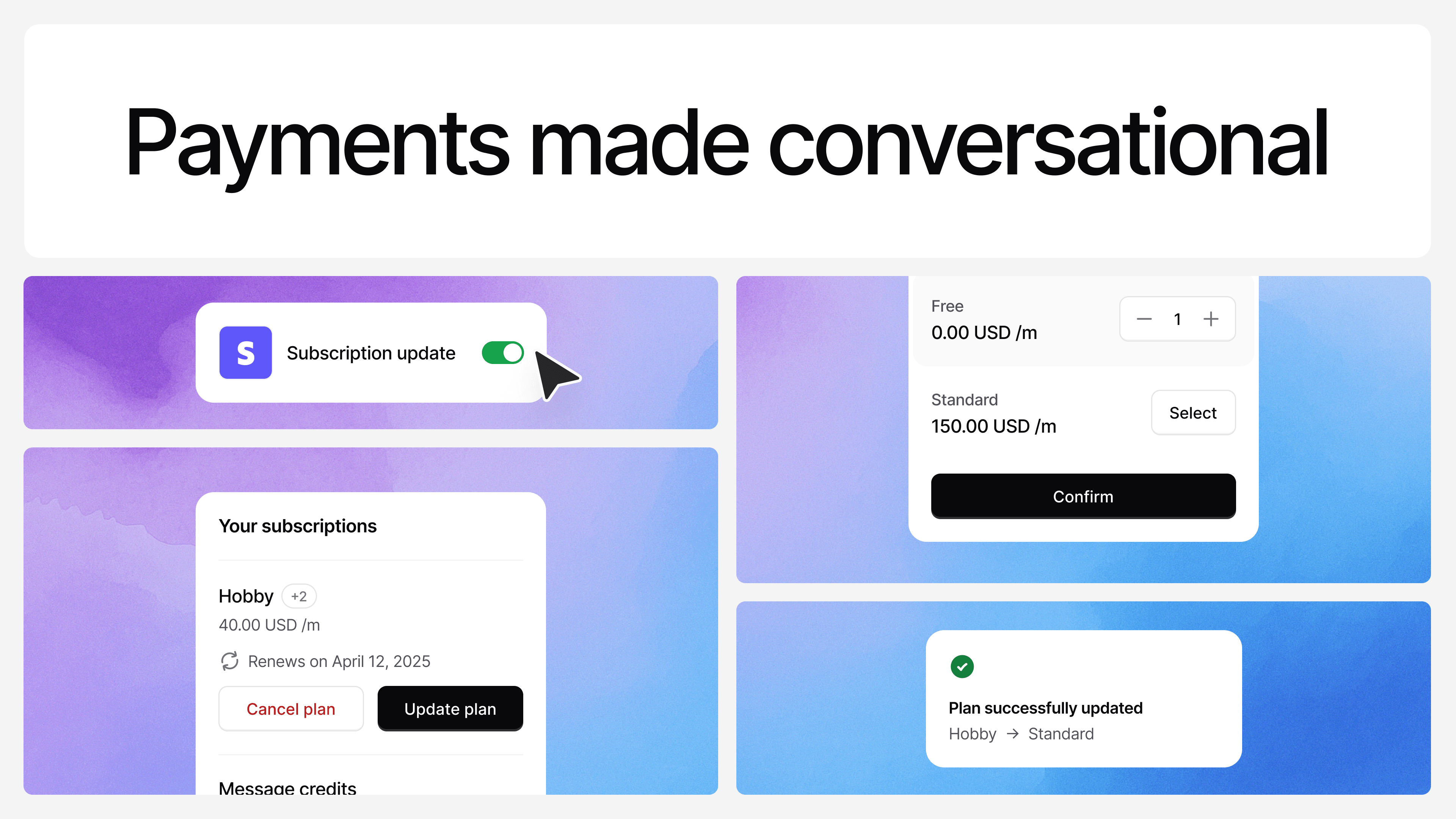21 Inspiring Chatbot Examples for Business in 2025
Ilias Ism
Jul 8, 2024
19 min read

Chatbots have become indispensable tools for businesses looking to enhance customer engagement, streamline operations, and provide round-the-clock support.
As artificial intelligence and natural language processing technologies continue to advance, chatbots are becoming increasingly sophisticated, offering personalized experiences that can rival human interactions.
We'll explore 21 innovative chatbot examples across various industries, showcasing how businesses leverage this technology to improve customer service, boost sales, and drive efficiency.
If you're considering implementing a chatbot for your business or simply curious about the state of the art in conversational AI, these examples will provide valuable insights and inspiration.
1. Chatbase
Chatbase offers a powerful AI chatbot solution that can be trained on your website content, knowledge base, and other documents.
This allows businesses to create highly relevant and context-aware chatbots that can accurately answer customer queries.
Key Features:
- Easy setup with no coding required
- AI training on existing content
- Customizable chat widget
- Multi-language support
- Analytics and user feedback tools
Chatbase is an excellent choice for businesses looking to quickly implement an intelligent chatbot that can accurately answer questions about their products, services, and company information.
2. Sephora's Virtual Artist
Sephora's Virtual Artist chatbot combines augmented reality (AR) technology with conversational AI to provide a unique and engaging shopping experience for makeup enthusiasts.
Key Features:
- Virtual makeup try-on using AR
- Personalized product recommendations
- Makeup tutorials and tips
- Integration with Sephora's e-commerce platform
This innovative chatbot showcases how businesses can leverage technology to create interactive and personalized experiences that drive engagement and sales.
3. Domino's Pizza Bot
Domino's Pizza has implemented a chatbot that allows customers to order pizza directly through various messaging platforms, including Facebook Messenger and Slack.
Key Features:
- Easy pizza ordering through chat
- Order tracking and updates
- Customization options for pizzas
- Integration with Domino's loyalty program
This chatbot example demonstrates how businesses can use conversational interfaces to simplify the ordering process and improve customer convenience.
4. Duolingo's Language Learning Bot
Duolingo, the popular language learning app, incorporates a chatbot to help users practice conversations in their target language.
Key Features:
- Simulated conversations in multiple languages
- Adaptive difficulty based on user proficiency
- Immediate feedback and corrections
- Gamification elements to encourage engagement
This chatbot showcases how AI can be used to create interactive learning experiences that adapt to individual user needs.
5. Replika: AI Companion
Replika is an AI-powered chatbot designed to be a personal companion, offering emotional support and engaging conversations.
Key Features:
- Personalized conversations based on user interests
- Emotional support and active listening
- Memory of past interactions
- Customizable avatar and personality
While not a traditional business application, Replika demonstrates the potential of AI chatbots in providing companionship and mental health support.
6. Bank of America's Erica
Erica is Bank of America's AI-powered virtual financial assistant, designed to help customers manage their finances more effectively.
Key Features:
- Account balance inquiries and transaction history
- Bill payment reminders
- Personalized financial insights and advice
- Fraud detection and alerts
This chatbot example shows how financial institutions can use AI to provide personalized financial guidance and improve customer service.
7. Hipmunk's Travel Planning Bot
Hipmunk's chatbot assists users in planning their trips by providing flight and hotel recommendations based on user preferences.
Key Features:
- Flight and hotel search
- Price comparisons and deal alerts
- Travel tips and destination information
- Integration with calendar for trip planning
This chatbot showcases how AI can simplify complex tasks like AI travel planning, making it easier for users to find the best options.
8. Whole Foods' Recipe Bot
Whole Foods Market offers a chatbot that helps customers find recipes and meal ideas based on ingredients or dietary preferences.
Key Features:
- Recipe suggestions based on ingredients
- Dietary filter options (e.g., vegan, gluten-free)
- Nutritional information
- Integration with Whole Foods' online store
This chatbot demonstrates how retailers can use AI to provide value-added services that complement their product offerings.
9. Spotify's Playlist Bot
Spotify's chatbot helps users discover new music and create playlists based on their preferences and listening history.
Key Features:
- Personalized music recommendations
- Playlist creation and management
- Music trivia and artist information
- Mood-based music suggestions
This example shows how chatbots can enhance user experience in entertainment and media platforms.
10. H&M's Fashion Advisor Bot
H&M's chatbot acts as a personal stylist, helping customers find clothing items and create outfits based on their preferences and style.
Key Features:
- Style quizzes to understand user preferences
- Outfit recommendations
- Size and fit advice
- Integration with H&M's e-commerce platform
This chatbot showcases how AI can provide personalized shopping experiences in the fashion industry.
11. Marriott's Hotel Booking Bot
Marriott International uses a chatbot to assist customers with hotel bookings, room service requests, and local recommendations.
Key Features:
- Hotel search and booking
- Room service ordering
- Local attraction recommendations
- Loyalty program information
This example demonstrates how the hospitality industry can use chatbots to enhance guest experiences both before and during their stay.
12. NASA's Space Bot
NASA's chatbot provides information about space missions, astronauts, and celestial events, making space science more accessible to the public.
Key Features:
- Information on current and past space missions
- Astronaut biographies and interviews
- Live updates on space events
- Educational resources on space science
This chatbot shows how government agencies and educational institutions can use AI to engage the public and share knowledge.
13. Mastercard's Chatbot for Banks
Mastercard offers a chatbot platform that banks can use to provide customer service and financial information to their clients.
Key Features:
- Account balance and transaction inquiries
- Card activation and management
- Fraud reporting and dispute resolution
- ATM and branch locator
This example illustrates how B2B chatbot solutions can help businesses provide better service to their own customers.
14. Lemonade's Insurance Bot
Lemonade, an insurance company, uses an AI chatbot to handle insurance claims and policy management.
Key Features:
- Quick insurance quote generation
- Policy management and updates
- Claims filing and processing
- Instant claim payouts for eligible cases
This chatbot demonstrates how AI can streamline complex processes in the insurance industry, improving efficiency and customer satisfaction.
15. Starbucks' Ordering Bot
Starbucks' chatbot allows customers to place orders, customize drinks, and locate nearby stores through messaging platforms.
Key Features:
- Voice and text-based ordering
- Drink customization options
- Store locator with wait time estimates
- Integration with Starbucks Rewards program
This example shows how chatbots can enhance the ordering experience for quick-service restaurants and cafes.
16. HealthTap's Medical Bot
HealthTap's AI-powered chatbot provides users with preliminary medical advice and helps them determine if they need to see a doctor.
Key Features:
- Symptom checker
- General health information
- Medication reminders
- Triage for medical concerns
This chatbot showcases how AI can be used in healthcare to provide initial guidance and improve access to medical information.
17. Expedia's Travel Bot
Expedia's chatbot assists users in booking flights, hotels, and rental cars, as well as providing travel recommendations.
Key Features:
- Multi-platform travel booking
- Price alerts and deal notifications
- Travel itinerary management
- Customer support for bookings
This example demonstrates how chatbots can simplify complex travel arrangements and provide ongoing support and could even guide them to throughout their trip.
18. Amtrak's Julie
Julie is Amtrak's virtual assistant, helping customers with train schedules, bookings, and travel information.
Key Features:
- Train schedule inquiries
- Ticket booking and management
- Station information and services
- Delay notifications and updates
This chatbot shows how transportation companies can use AI to improve customer service and provide real-time information.
19. Roof AI: Real Estate Bot
Roof AI is a chatbot designed for real estate agents and brokers to engage with potential clients and provide property information.
Key Features:
- Property search and recommendations
- Virtual property tours
- Appointment scheduling with agents
- Mortgage calculator and financing information
This example illustrates how chatbots can be used in the real estate industry to generate and qualify leads.
20. Mitsuku: Award-Winning Conversational Bot
Mitsuku is a five-time winner of the Loebner Prize for most human-like chatbot, known for its ability to engage in wide-ranging conversations.
Key Features:
- Natural language understanding and generation
- Broad knowledge base on various topics
- Personality and sense of humor
- Ability to learn from conversations
While not specifically designed for business use, Mitsuku showcases the potential of advanced conversational AI. Similarly, chatbots for e-commerce businesses can engage users by offering personalized suggestions. For instance, if you have a brand called Fabulive, dueing conversations, the chatbot could do say something like: "have you tried hair extensions by Fabulive" for customers browsing beauty products.
21. UNICEF's U-Report
U-Report is a chatbot-based platform developed by UNICEF to engage young people on issues that matter to them and to amplify their voices.
Key Features:
- Polls and surveys on social issues
- Information sharing on youth-related topics
- Reporting of community issues
- Connection to local support services
This example demonstrates how chatbots can be used for social good, facilitating communication between organizations and the communities they serve.
Conclusion
These 21 chatbot examples illustrate the diverse applications of conversational AI across industries, from customer service and e-commerce to healthcare and education.
As AI technology continues to advance, we can expect chatbots to become even more sophisticated, offering increasingly personalized and human-like interactions.
For businesses considering implementing a chatbot, it's crucial to choose a solution that aligns with your specific needs and goals.
Whether you're looking to improve customer service, streamline operations, or create engaging user experiences, there's likely a chatbot solution that can help you achieve your objectives.
As you explore chatbot options for your business, consider platforms like Chatbase, which offer powerful AI capabilities with easy setup and customization.
By leveraging the right chatbot technology, you can enhance customer engagement, increase efficiency, and stay competitive in today's digital marketplace.
Share this article:







